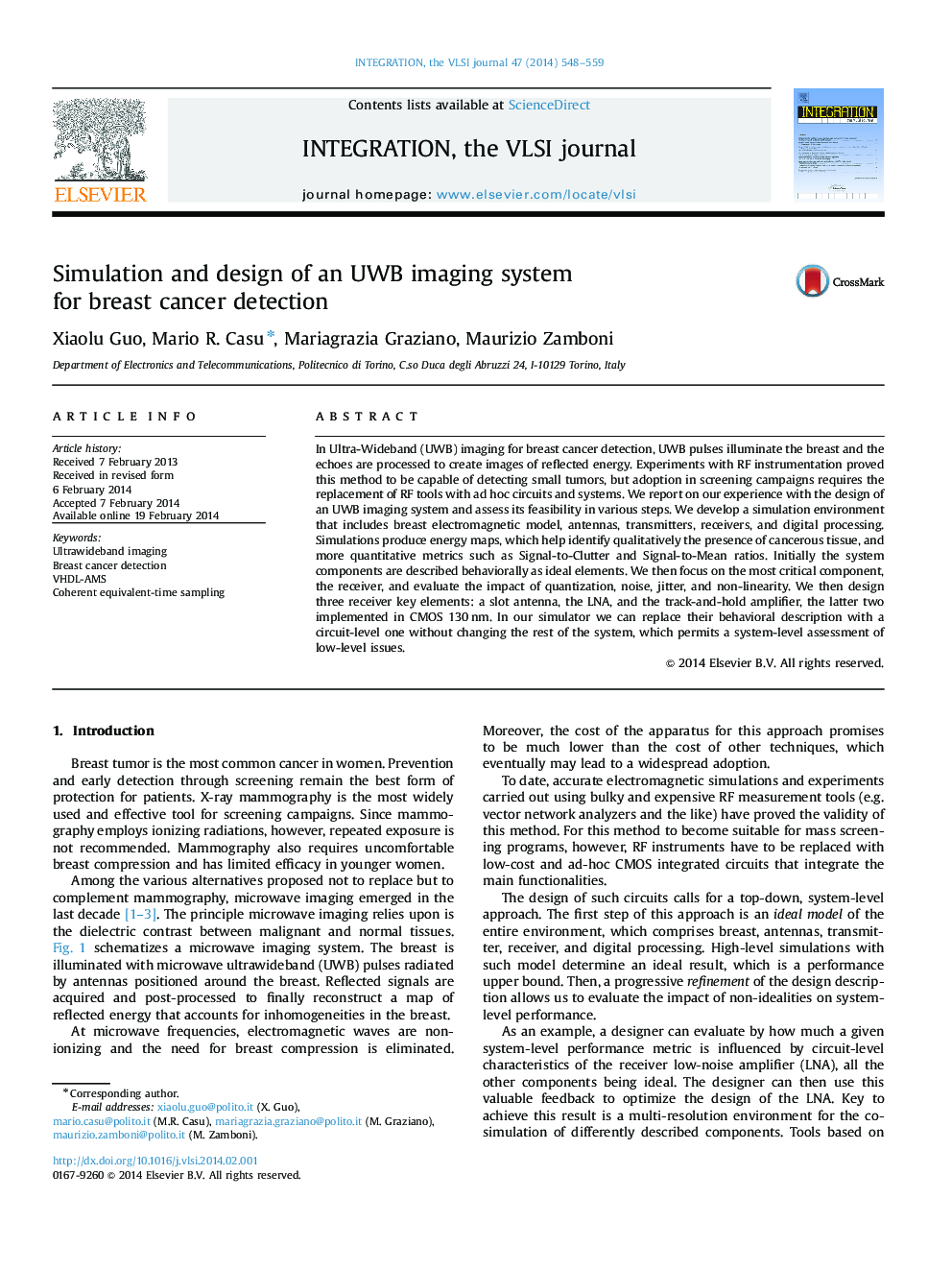| Article ID | Journal | Published Year | Pages | File Type |
|---|---|---|---|---|
| 541006 | Integration, the VLSI Journal | 2014 | 12 Pages |
•We report a simulation environment of an UWB system for breast cancer detection.•We use measured breast electrical parameters in the microwave frequency range.•We outline the implementation of the UWB imaging system and its design methodology.•We prove that an implementation leveraging CMOS technology is feasible.•We evaluate the effects of noise and circuit-level non-ideality.
In Ultra-Wideband (UWB) imaging for breast cancer detection, UWB pulses illuminate the breast and the echoes are processed to create images of reflected energy. Experiments with RF instrumentation proved this method to be capable of detecting small tumors, but adoption in screening campaigns requires the replacement of RF tools with ad hoc circuits and systems. We report on our experience with the design of an UWB imaging system and assess its feasibility in various steps. We develop a simulation environment that includes breast electromagnetic model, antennas, transmitters, receivers, and digital processing. Simulations produce energy maps, which help identify qualitatively the presence of cancerous tissue, and more quantitative metrics such as Signal-to-Clutter and Signal-to-Mean ratios. Initially the system components are described behaviorally as ideal elements. We then focus on the most critical component, the receiver, and evaluate the impact of quantization, noise, jitter, and non-linearity. We then design three receiver key elements: a slot antenna, the LNA, and the track-and-hold amplifier, the latter two implemented in CMOS 130 nm. In our simulator we can replace their behavioral description with a circuit-level one without changing the rest of the system, which permits a system-level assessment of low-level issues.
